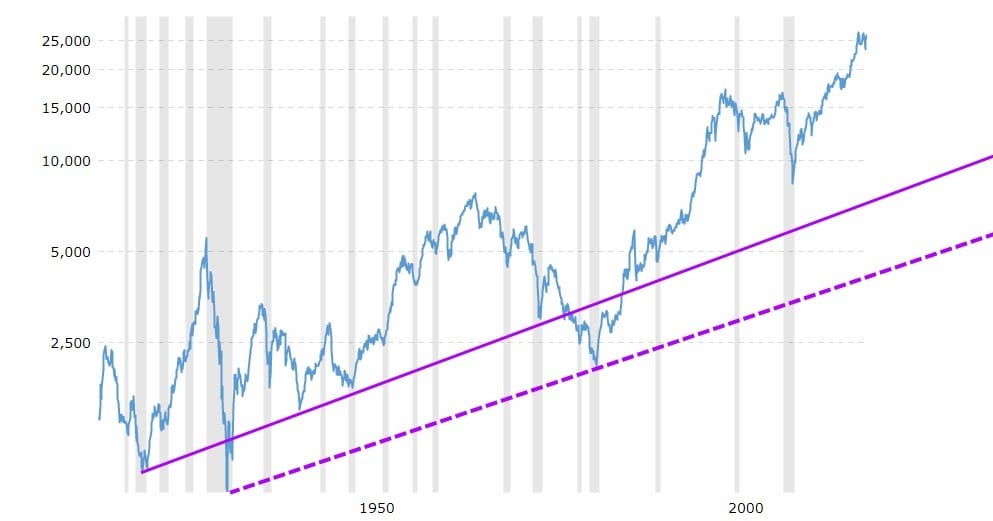
Unveiling Contrarian Secrets: Your Guide to Financial Rebellion
Updated April 12, 2024
Contrarian investing is a dynamic and ever-evolving field, and as a result, it cannot be considered a static approach to investing. A static approach cannot deliver long-term success, as the playing field constantly evolves. The strategies that worked in the past may not be effective today, and this is why many value investors have struggled to keep pace in recent years.
The notion that contrarian investing is a static field is held by some inexperienced investors who view it as a fashionable approach. These “fashion contrarians” often lack a proper understanding of the principles of contrarian investing and merely pretend to be different from the masses. In times of fear or uncertainty, these individuals abandon their contrarian approach and follow the crowd, much like bandits fleeing from the hounds of hell.
A genuine contrarian investor must have a solid understanding of mass psychology and its impact on the markets. An investor unfamiliar with these concepts lacks valuable insights to inform investment decisions.
Additionally, investors must recognize the role of psychological manipulation, also known as the “war on perceptions,” in the markets. Understanding how manipulators attempt to shape investor perceptions and influence their behaviour is a critical component of successful contrarian investing. At the Tactical Investor, this subject is vital and should not be overlooked.
Dare to Diverge: Contrarian Wisdom for Extraordinary Returns
Contrarian investing is a strategic approach that diverges from the crowd, offering the potential for high returns. This method requires courage and conviction as investors seek undervalued opportunities during market downturns, when quality assets can be acquired at low prices.
The principle of buying low and selling high guides contrarian philosophy. Investors must understand market dynamics and undertake meticulous research to identify temporary setbacks in sectors, industries, or stocks that are undervalued. Timing is critical to maximizing returns, and contrarians must be patient, holding positions until the market recognizes the true value of their investments.
According to Warren Buffett, a legendary investor, “You pay a very high price in the stock market for a cheery consensus.” This highlights the essence of contrarian investing, which involves going against the grain and often purchasing assets when they are out of favor.
Another renowned investor, Sir John Templeton, is known for his famous quote, “The time of maximum pessimism is the best time to buy, and the time of maximum optimism is the best time to sell.” This strategy encapsulates the essence of contrarian investing, emphasizing the importance of acting contrary to the crowd’s emotions.
Success in contrarian investing demands discipline, a well-defined strategy, and risk management skills. It is a challenging path that requires investors to embrace criticism and skepticism, standing firm in their analytical convictions.
In summary, contrarian investing is a bold approach that can lead to significant financial rewards. By understanding market dynamics and timing, investors can identify undervalued assets and capitalize on them, potentially reaping substantial returns.
Experts like Buffett and Templeton highlight the essence of this strategy, providing a valuable framework for those willing to dare and diverge.
Mass Psychology: The Foundation of Contrarian Investing
At the core of contrarian investing lies the concept of mass psychology. Understanding how psychological factors shape human behavior and influence market trends is crucial. As renowned investor Warren Buffett once said, “Be fearful when others are greedy, and be greedy when others are fearful.” This sentiment encapsulates the essence of contrarian investing.
Contrarian investors recognize that markets are driven by emotions, such as fear and greed, which can lead to irrational behavior and mispricing of assets. By studying market sentiment and identifying instances of excessive optimism or pessimism, contrarian investors can spot opportunities to buy undervalued assets or sell overvalued ones.
Legendary investor Sir John Templeton emphasized the importance of going against the crowd, stating, “To buy when others are despondently selling and to sell when others are avidly buying requires the greatest fortitude and pays the greatest ultimate rewards.” Contrarian investors embrace this mindset, seeking to capitalize on market inefficiencies.
Contrarian Investing Principles: A Strategic Approach
While understanding mass psychology is crucial, successful contrarian investing also requires adherence to guiding principles. These principles provide a framework for making informed investment decisions and managing risk.
1. Value Investing: Contrarian investors often focus on value investing, seeking undervalued stocks or assets that have fallen out of favor with the market. By conducting thorough research and analysis, contrarian investors aim to identify companies with strong fundamentals and long-term growth potential.
2. Patience and Discipline: Contrarian investing requires patience and discipline. It often involves taking a long-term perspective and being willing to hold investments through short-term market fluctuations. As renowned investor Benjamin Graham noted, “The intelligent investor is a realist who sells to optimists and buys from pessimists.”
3. Risk Management: Contrarian investing is not about blindly going against the crowd. Effective risk management is essential. This involves diversifying investments, setting straightforward entry and exit points, and being prepared to adjust strategies as market conditions change.
4. Contrarian Indicators: Investors often seek specific indicators that signal potential opportunities. These can include high levels of insider buying, low price-to-earnings ratios, or a significant divergence between a company’s stock price and its intrinsic value.
Tactical Approaches to Contrarian Investing
Implementing contrarian investing strategies requires a tactical approach. Here are some specific tactics that contrarian investors can employ:
1. Sector Rotation: Contrarian investors may look for sectors that are currently out of favour but have the potential for a rebound. This could involve investing in sectors such as energy, retail, or commodities during periods of market pessimism.
2. Contrarian ETFs: Exchange-traded funds (ETFs) that focus on contrarian strategies, such as value investing or investing in small-cap stocks, can expose contrarian opportunities without needing individual stock picking.
3. Options Strategies: Contrarian investors can utilize options strategies, such as selling put options on undervalued stocks, to generate income and potentially acquire stocks at a discount.
4. Global Opportunities: Contrarian investors may look beyond their home market to identify opportunities in international or emerging markets that are overlooked by the mainstream.
Renowned contrarian investor David Dreman emphasizes the importance of a disciplined approach, stating, “The market is a complex and often irrational mechanism. Successful contrarian investing requires a combination of independent thinking, rigorous analysis, and emotional discipline.”
Contrarian Wisdom: Navigating Markets with Buffett, Templeton, and Graham
Contrarian investing is an approach that leverages market pessimism to identify undervalued assets. This strategy involves buying when fear is high and selling when euphoria is widespread, a philosophy often attributed to successful investors like Warren Buffett.
Buffett is known for his famous quote: “Be fearful when others are greedy, and greedy when others are fearful.” This sums up the essence of contrarian investing, which requires emotional discipline and independent decision-making.
Another key aspect is the ability to withstand skepticism and criticism. Legendary investor Sir John Templeton, known for his contrarian approach, once said, “If you buy the same stocks as other people, you will have the same results as other people.” This underscores the importance of thinking independently and not being swayed by the crowd.
Contrarian investors must be vigilant and quick to identify opportunities, as markets can be volatile. This strategy requires a disciplined mindset, rigorous research, and a long-term outlook.
According to Benjamin Graham, often regarded as the father of value investing, “In the short run, the market is a voting machine, but in the long run, it is a weighing machine.” This highlights the need for contrarians to focus on the long-term intrinsic value of their investments rather than short-term market sentiment.
Quotes from Notable Contrarian Investors
Sir John Templeton
“To buy when others are despondently selling and to sell when others are greedily buying requires the greatest fortitude and pays the greatest reward.”
“Bull markets are born on pessimism, grown on scepticism, mature on optimism and die on euphoria. The time of maximum pessimism is the best time to buy, and the time of maximum optimism is the best time to sell.”
“If you want to have a better performance than the crowd, you must do things differently from the crowd.”
“Invest at the point of maximum pessimism.
The four most dangerous words in investing are ‘This time it’s different.’”
“If we become increasingly humble about how little we know, we may be more eager to search.”
Sam Zell
“I am very focused on understanding the downside.”
“If everyone is going left, look right.”
“I have always tried to be a contrarian. I have always tried to buy things when nobody else wants them and sell them when everyone else wants them.”
“There is tremendous value in being a good listener.”
“I run my company as a meritocracy with a moral compass.”
“I believe in leaving a little on the table in any negotiation. And in any relationship, I believe in sharing the stakes.”
“I believe in taking calculated risks. If you’re not taking any risks, you won’t be successful.”
“To be a contrarian, you have to have a very clear idea of what the market is thinking and then be willing to go against it.”
“Successful investing is all about anticipating changes before they happen.
Contrarian Insight: A Critical Viewpoint for Smart Investors
All backbreaking corrections should be embraced, for the Fed will never allow this market to crash—case in point, the backbreaking so-called market crash of 1987 and the even scarier one of 2008. “Buy the noise and sell” the crap for the trend is always your friend unless you fight it.
Conclusion
Mastering contrarian investing involves a deep understanding of mass psychology and a strategic approach to investing. By recognizing market inefficiencies, adhering to guiding principles, and employing tactical approaches, contrarian investors can navigate the complexities of the market and potentially generate significant returns.
However, contrarian investing is not without risks. It requires a strong conviction, the ability to withstand short-term volatility, and a willingness to go against the crowd. As with any investment strategy, thorough research, risk management, and a long-term perspective are essential.
By combining the insights of renowned contrarian investors like Warren Buffett, Sir John Templeton, and David Dreman, aspiring contrarian investors can develop a robust framework for success. Embracing the principles of value investing, patience, discipline, and independent thinking, contrarian investors can unlock opportunities in the ever-changing landscape of financial markets.
In summary, contrarian investing is a powerful strategy that utilizes market fear to identify undervalued assets. It requires emotional discipline, independent thinking, and a long-term perspective. By embracing this approach, investors can make informed decisions that go against the crowd and potentially achieve significant returns.
Experts like Buffett, Templeton, and Graham provide valuable insights and frameworks for those willing to challenge conventional market wisdom.
Other Articles of Interest

The Trap: Why Is Investing in Single Stocks a Bad Idea?

Investment Pyramid: A Paradigm of Value or Risky Hail Mary?

Contrarian Investing: The Art of Defying the Masses

Quantitative Easing: Igniting the Corruption of Corporate America

Uranium Market Outlook: Prospects for a Luminous Growth Trajectory

Stock Investing for Kids: Surefire Path to Success!

An Individual Who Removes the Risk of Losing Money in the Stock Market: A Strategic Approach

Palladium Forecast: Unveiling the Stealth Bull Market

I Keep Losing Money In The Stock Market: Confronting the Stupidity Within

Is Value Investing Dead? Shifting Perspectives for Profit

Analyzing Trends: Stock Market Forecast for the Next 6 Months

Example of Groupthink: Mass Panic Selling at Market Bottom

Contrarian Thinking: The Power of Challenging the Status Quo

Mastering Technical Analysis Of The Financial Markets

Unraveling the Enigma: The Dark Allure of Mob Mentality
Contrarian Investment Resources
Why market crashes are buying opportunities
Inductive Versus Deductive reasoning
Comic Strip Illustrating Mass Mindset
Mass Psychology or Contrarian Investing



